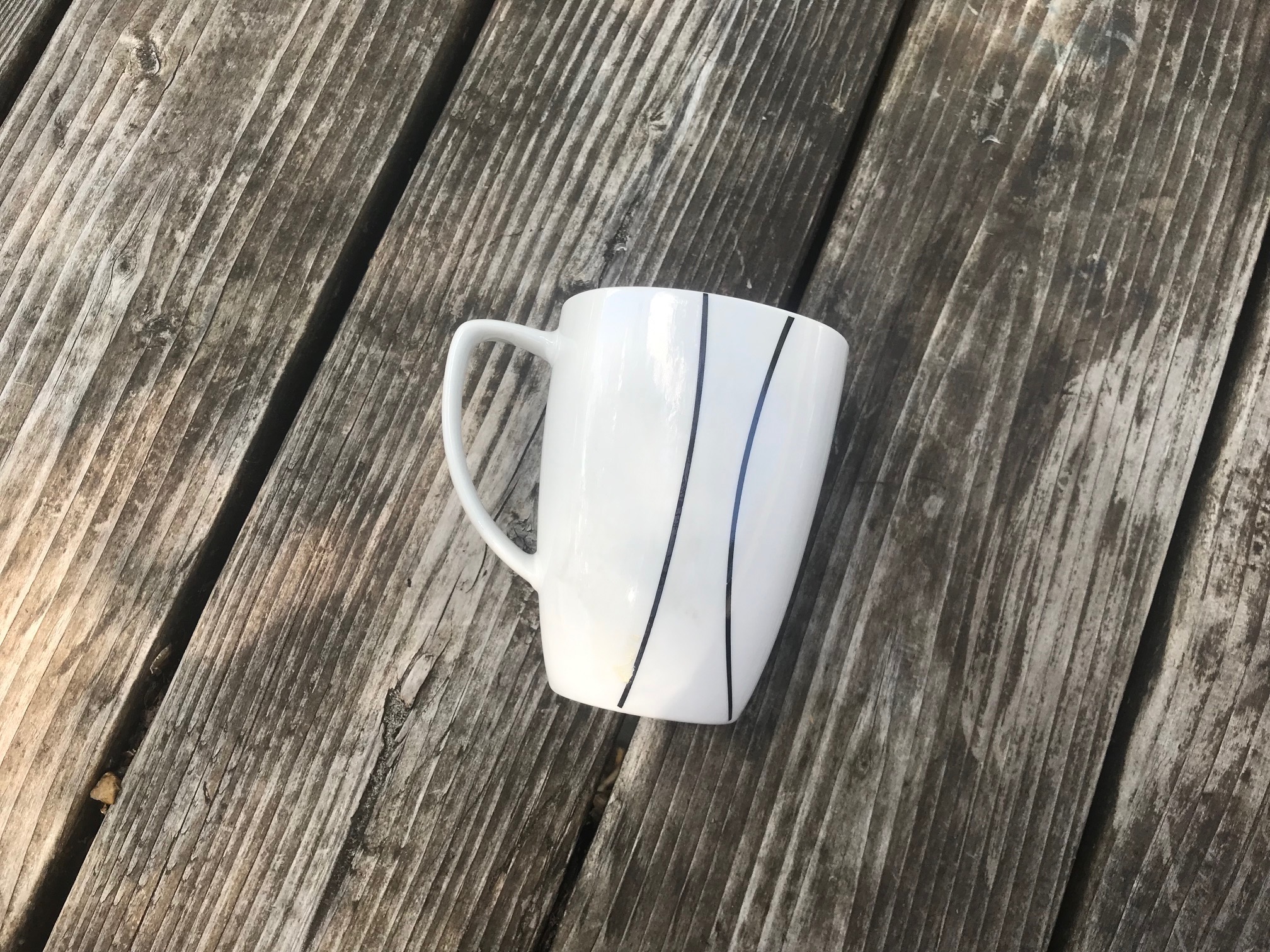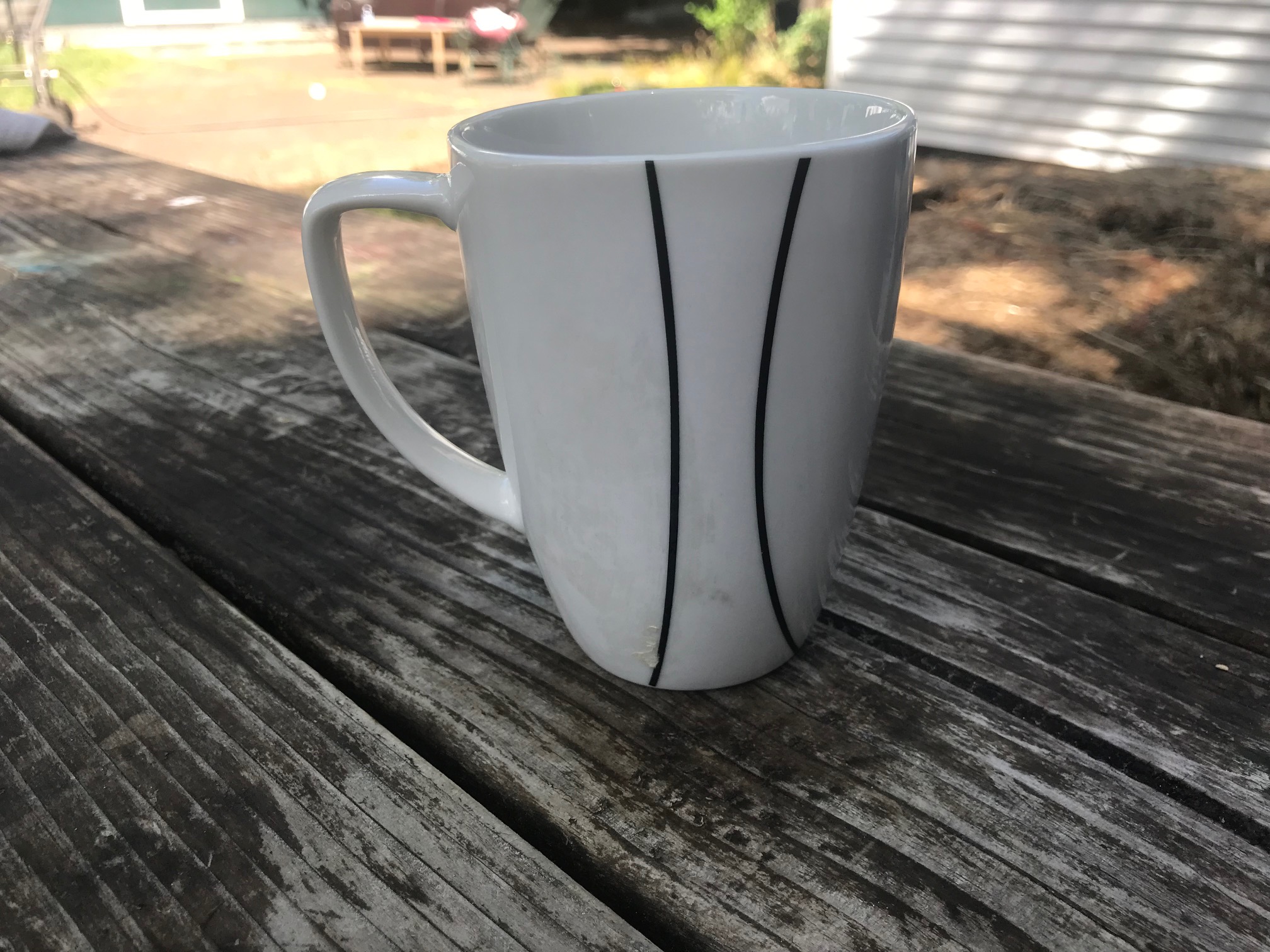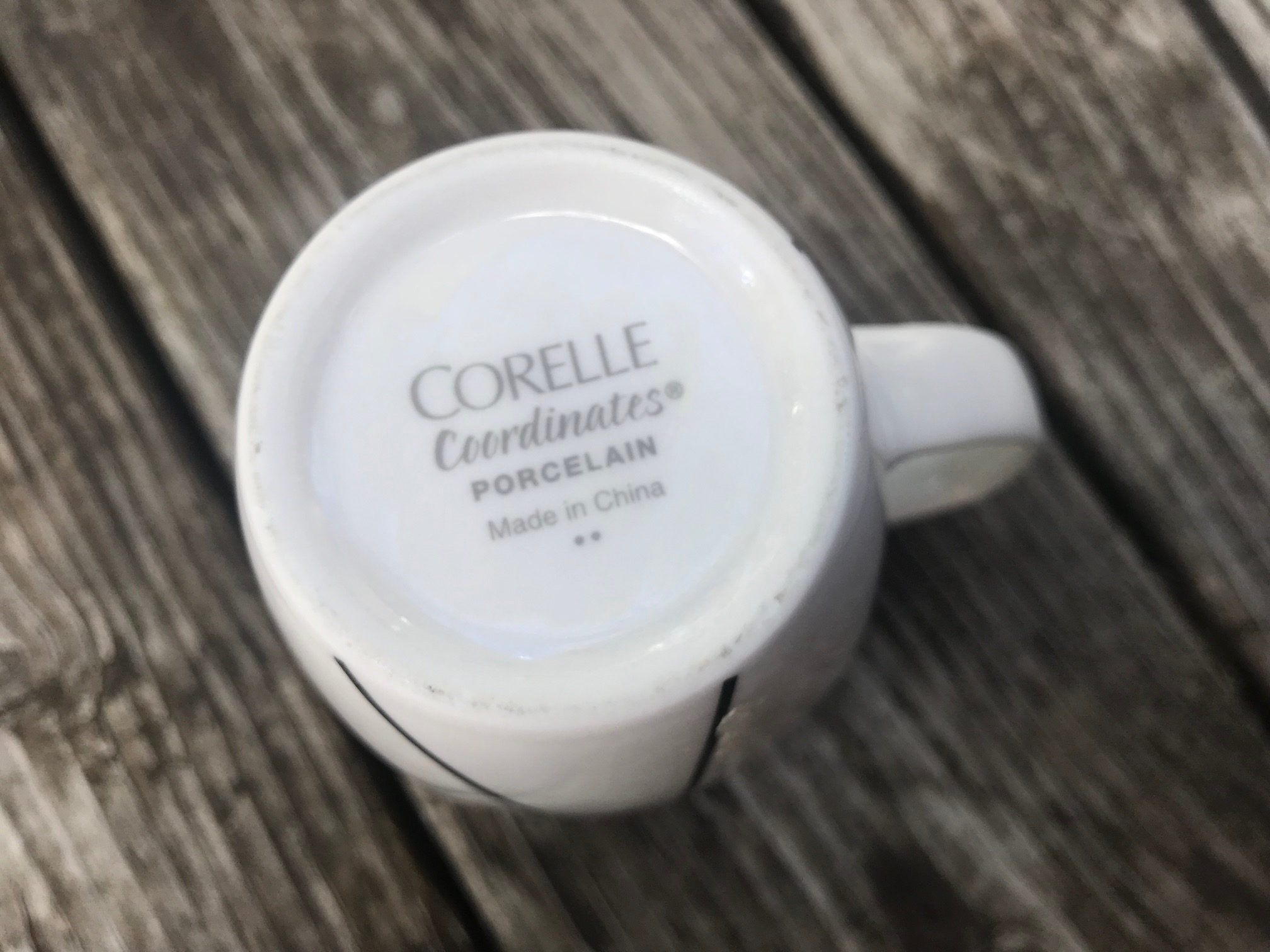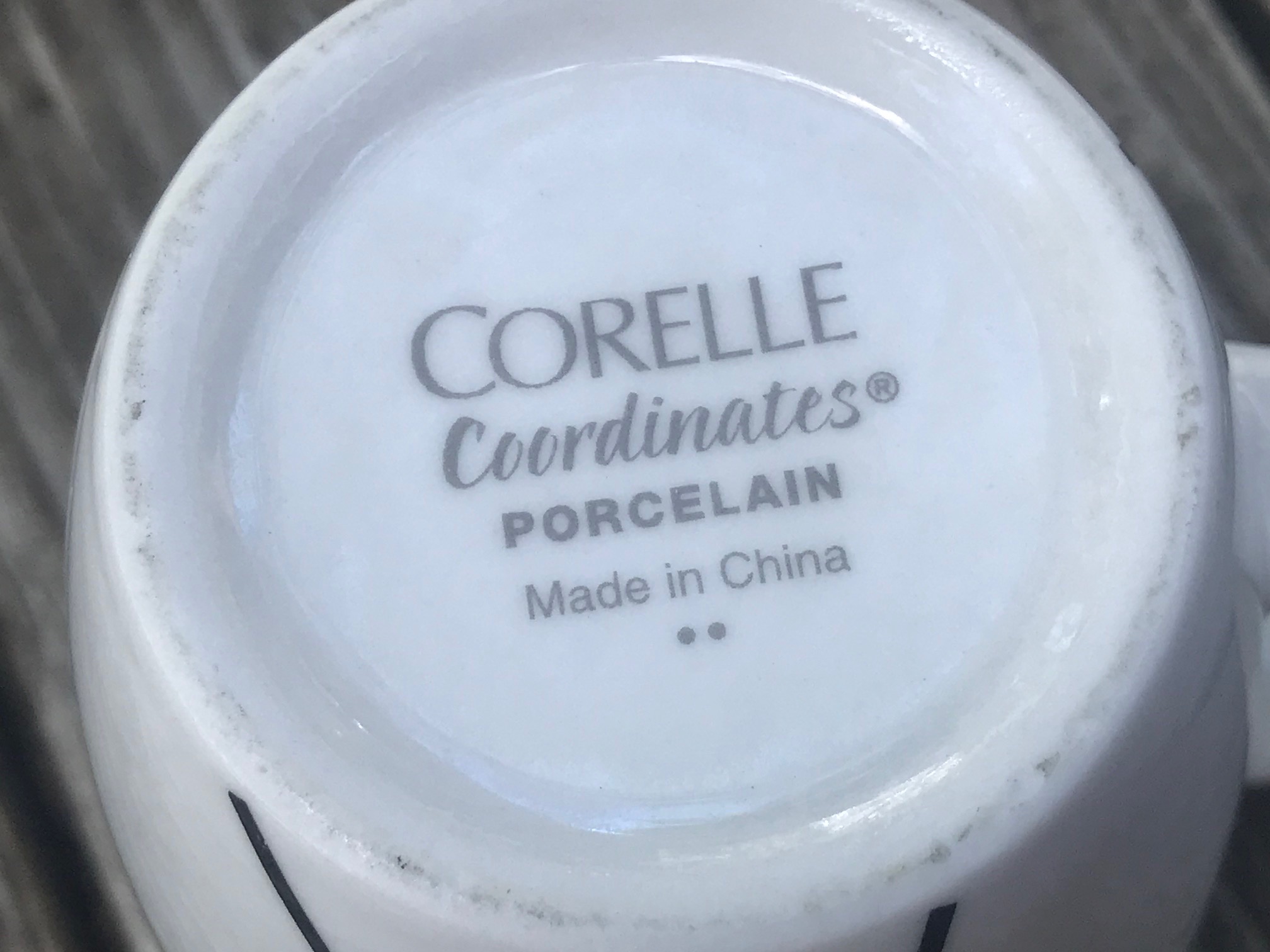Corelle Coordinates White Porcelain Mug with Black Stripe Design: 6,300 ppm Lead (90 is unsafe in kids’ items.)
 When tested with an XRF instrument the mug pictured here had the following readings:
When tested with an XRF instrument the mug pictured here had the following readings:
Test focused on area of mug with black stripe:
- Lead (Pb): 6,300 +/- 157 ppm
- Barium (Ba): 184 +/- 50 ppm
- Chromium (Cr): 791 +/- 104 ppm
- Tin (Sn): 48 +/- 15 ppm
- Zinc (Zn): 11,500 +/- 300 ppm
- Iron (Fe): 1,606 +/- 182 ppm
- Bismuth (Bi): 58 +/- 27 ppm
- Vanadium (V): 561 +/- 54 ppm
- Titanium (Ti): 802 +/- 77 ppm
- Cobalt (Co): 1,576 +/- 139 ppm
- Mn: 954 +/- 233 ppm
Test focused on area of mug with only plain white glaze:
- Lead (Pb): 138 +/- 17 ppm
- Barium (Ba): 162 +/- 44 ppm
- Zinc (Zn): 12,800 +/- 300 ppm
- Iron (Fe): 1,476 +/- 166 ppm
- Bismuth (Bi): 87 +/- 16 ppm
- Vanadium (V): 109 +/- 29 ppm
- Titanium (Ti): 348 +/- 51 ppm
Metals not detected by the XRF in “Consumer Goods” mode are not listed. Tests were done for a minimum of 60 seconds each to confirm the reading. Results are science-based and replicable and conducted with a Niton XL3T XRF in “Consumer Goods” mode.
As always, please let me know if you have any questions.
Thank you for reading and for sharing my posts.
Never Miss an Important Article Again!
Join our Email List






Hi,
I just called Corelle and they insist their products are 0.1 ppm. Is the mug you tested here a new mug, or something that was bought a while ago? Just trying to figure this out.
Many thanks
Hi Joe,
I don’t know the exact year of purchase for the mug, it is an item sent in by one of my readers.
Thanks for commenting.
Tamara
I have the white Corelle with the black stripes. I have the mugs, plates, and bowls. Are they safe?
My mother has them too and my sister and I ate off them all the time growing up. I’d suggest sending them to be tested. I want to try and talk my mom into doing that and if she does I’ll share the report with Tamara. If the mugs tested highly I would assume the plates & bowls also would, which is even more concerning since the black stripe goes right over the surface you eat off of
Weird question but is lead detected using the XRF bioavailable? I know in one of your livestreams you talked about how lead in glass items is sometimes contained and non-bioavailable so they are sometimes a bit safer when they test for lead.
They bowl of the same design was within the safe zone. So why did the mug get a high rating? Do you think they were made in different years?
They are not marked with year of manufacture so one cannot know. The mugs are porcelain and the dishes are glass. The mugs are generally high when the dishes are negative or lower (for the modern patterns.)
T